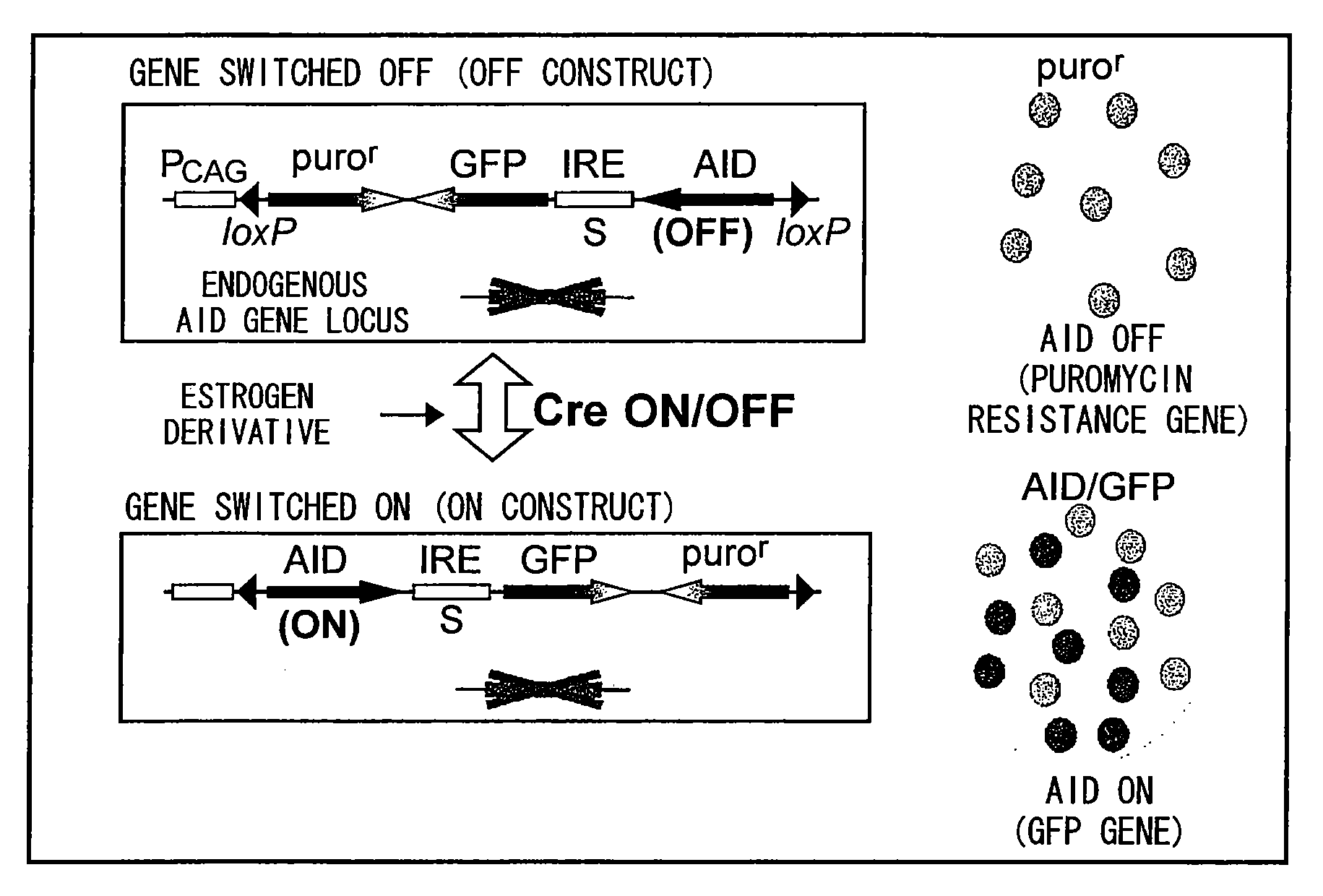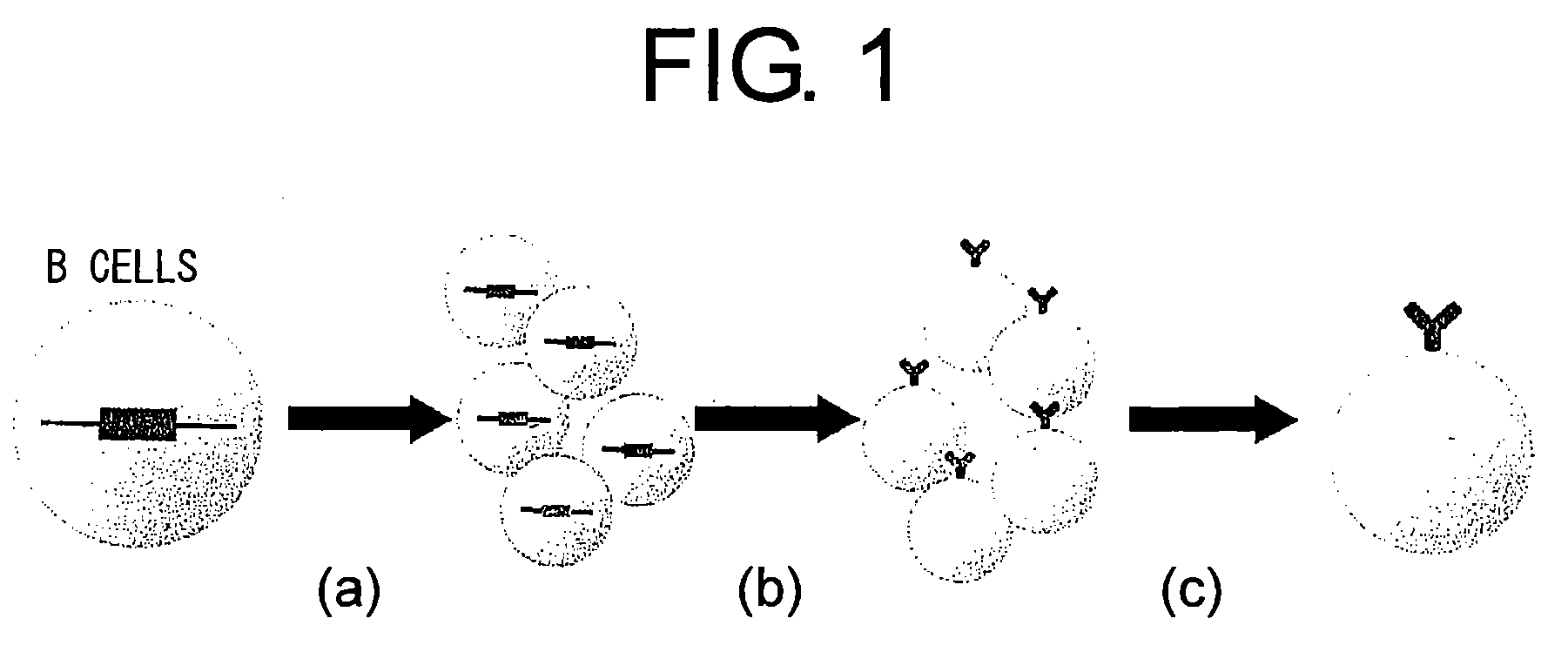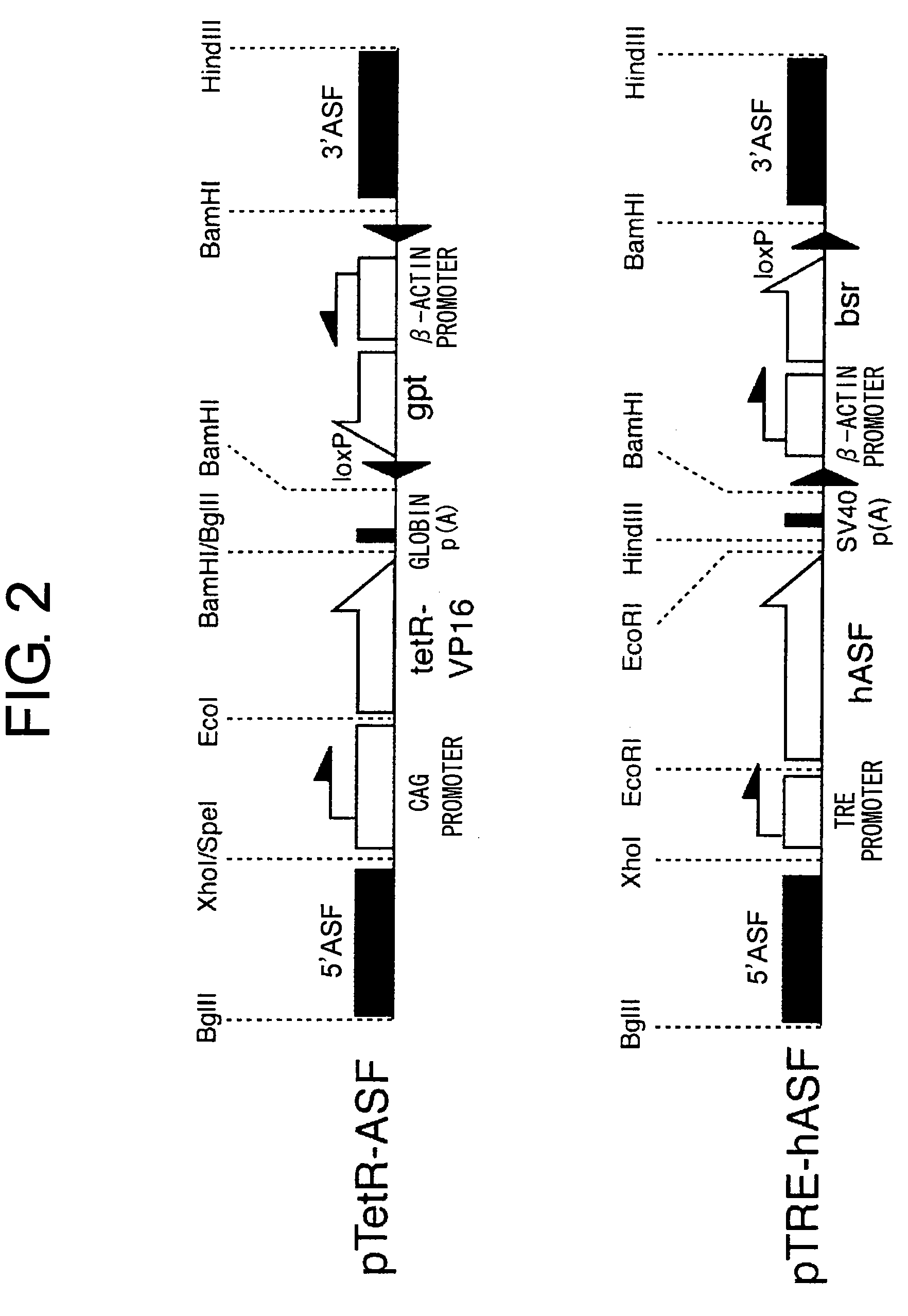Methods for Specifically Selecting Antibody-Producing Cells
- Summary
- Abstract
- Description
- Claims
- Application Information
AI Technical Summary
Benefits of technology
Problems solved by technology
Method used
Image
Examples
example 1
Construction of ASF Gene Targeting Construct (pTetR-ASF) Incorporating Tetracycline-Controlled Transcription Activating Factor (tetR-VP16)
[0114]An ASF gene targeting construct was constructed for expressing a transcription activating factor to control gene expression under a tetracycline-controlled promoter, and for disrupting one of the loci of endogenous chicken ASF gene (FIG. 2).
[0115]A DNA in which tetR-VP16 gene and a rabbit globin poly A addition sequence were arranged in the forward direction downstream of a CAG promoter (in which chicken actin promoter was linked to a human cytomegalovirus early enhancer), and a reverse-oriented guanine phosphoribosyl transferase (gpt) gene expression cassette (expressed under the control of chicken actin promoter, containing an SV40 poly A addition sequence and having a loxP sequence on both ends), were inserted into the first exon part of chicken ASF genomic DNA cloned in a pBluescript II plasmid. Here, the chicken ASF genomic DNA was obta...
example 2
Construction of a Construct (pTRE-hASF) for Targeting ASF Gene Locus Capable of Expressing Human ASF Gene only in the Absence of Tetracycline
[0118]A construct which is capable of expressing human ASF gene under conditions where tetracycline is absent and which is used for the disruption of one of the gene loci of the endogenous chicken ASF gene was constructed (FIG. 3).
[0119]A DNA in which human ASF gene and SV40 poly A addition sequence were arranged in the forward direction downstream of a TRE promoter (CMV minimum promoter having a Tet-responsive sequence which has 7 repeating tet-O sequences), and a blastocydine S resistance gene (bsr) expression cassette (expressed under the control of chicken actin promoter, containing an SV40 poly A addition sequence, and having a loxP sequence on both ends) were inserted into the first exon part of the chicken ASF genomic DNA cloned in a pBluescript II plasmid.
[0120]For the chicken ASF genomic DNA cloned in the pBluescript II vector, the chi...
example 3
Preparation of Cells Enabling Positive Selection using B Cell Antigen Receptor Signals resulting from the regulation of ASF Expression with Tetracycline (DT40-ASF and DT40-SW-ASF)
[0121]One of the endogenous ASF gene loci of wild DT40 cell line or DT40-SF cell line uniquely established by the present inventors (a mutant cell line enabling ON / OFF control of its antibody mutation function by reversibly switching the expression of AID gene that governs the mutation function, details of which are described in Kanayama, N., Todo, K., Reth, M., Ohmori, H., Biochem. Biophys. Res. Commun., 327:70-75 (2005)) was substituted with a human ASF (hASF) gene construct linked to a TRE promoter. The other ASF gene locus, on the other hand, was substituted with a transcription-factor (tetR-VP16) expression construct that promotes transcription by binding to a tetracycline responsive sequence to produce cell lines DT40-ASF and DT40-SW-ASF (FIG. 4B). tetR-VP16 is a gene construct that links a tetR (tet ...
PUM
 Login to View More
Login to View More Abstract
Description
Claims
Application Information
 Login to View More
Login to View More - R&D
- Intellectual Property
- Life Sciences
- Materials
- Tech Scout
- Unparalleled Data Quality
- Higher Quality Content
- 60% Fewer Hallucinations
Browse by: Latest US Patents, China's latest patents, Technical Efficacy Thesaurus, Application Domain, Technology Topic, Popular Technical Reports.
© 2025 PatSnap. All rights reserved.Legal|Privacy policy|Modern Slavery Act Transparency Statement|Sitemap|About US| Contact US: help@patsnap.com



